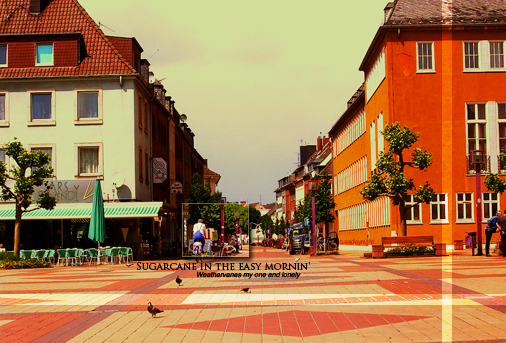
Just because it's the last blog, I've actually tried to write a decent entry.
 Saturday, June 5, 2010
Saturday, June 5, 2010 11:55 PM
11:55 PM
Okay, let's clear this one up, shall we?
What exactly are biosolids?
WELL, apparently it is mostly "organic" solids resulting from the treatment of wastewater, according to MABA (Mid-Atlantic Biosolids Association), NEBRA (North East Biosolids & Residuals Association, and mostly "nutrient-rich organic" to NBMA (Northwest Biosolids Management Association).
First of all, that "mostly" keeps trying to dig a whole through my head and sucking up more wild and crazy ideas of what could be the other "some" in biosolids. This organic solid can also mean as human feces, hence where it comes from - wastewater. The solids are either inorganic that may consist of, hopefully: sand, grit, nutrients, such as nitrogen and phosphorus; or organic, most likely: waste products from animals (including us) or vegetable originis, and a variety of synthetic chemicals. Synthetic chemicals? The last time I check up on chemicals in general are equally as bad.
Wastewater comes from your very own home: the kitchen, bathroom, laundry. It comes from industries and business as well. It is mostly made of 99.5% water, while the 1/2% is suspended, and dissolved solids. They go through a filter for a safe return to the environment. But do want to know what else?! Wast
 ewater also contain bacterias and other living organisms, which likely came from our own digestive system. Some may cause disease! Yep, that's right ladies and gents. This is one risky business.
ewater also contain bacterias and other living organisms, which likely came from our own digestive system. Some may cause disease! Yep, that's right ladies and gents. This is one risky business.How ever gruesome the topic may be, it is quite interesting. There are several pros and cons but I'm leaning towards for it, considering the benefits it contributes to the environment.
Continuing on, the disease filled, death trap of a water undergoes through wastewater treatment in order to separate biosolids and almost pure water. What about those bacterias in biosolids, you say? Well, the required biosolids treatment process reduce the levels of harmful living organism but take note that it is not entirely wiped out. Surprisingly and fortunately, there hasn't been any confirmed outbreaks of contagious diseases relating to the treated biosolids.
Properly treated biosolids, for your information, actually have a postive impact on water. It helps enrich soils and helping vegetation grow fuller. This also reduces soil erosion and groundwater pollution.
Is biosolids recycling the right thing to do?
Yes!
- Biosolids recycling returns nutrients and organic matter to soils.
- Biosolids recycling avoids the need for more costly landfill space or incinerators.
- Biosolids products are efficient fertilizers and soil amendments that build healthy soils, restore barren lands, and help keep New England and eastern Canadian landscapes open and growing.
- Biosolids recycling in accordance with regulations and best management practices has been proven safe and beneficial by decades of scientific study and peer review.
- Source: North East Biosolids & Residuals Association
I wouldn't worry too much of what it came from knowing of the extensive treatments and proper utilization but what might be in it. Although, I have freaked out at the beginning... but the point is, after researching I've found to grow a liking to it. Avoiding the gruesome details still, as well as the expense, risks, odor.
TAKE A LOOK AT WHAT TORONTO HAS BEEN DOING!
We currently use a number of ways of managing biosolids. Toronto's biosolids are all treated at the Ashbridges Bay Treatment Plant.
Sources:
http://www.mabiosolids.org/index.php?page=faq-s
http://www.nebiosolids.org/index.php?page=faqs
http://www.nwbiosolids.org/facts.htm
http://ehp.niehs.nih.gov/qa/105-1focus/focusbeauty.html
http://www.toronto.ca/water/biosolids/index.htm
http://www.cityofkingston.ca/residents/environment/biosolids/faq.asp

Well, it has been a great year. It's sad to say that this entry is the best I've ever done so far (it's not even that great), but looking at my previous entries... they're quite pathetic. Ahah. YAY SUMMER-! Oh, hello summer school...
2 Loves
The Aftermath of World War II
 Monday, May 24, 2010
Monday, May 24, 2010 8:33 PM
8:33 PMSpecifically after World War II, food has been only viewed as a source of energy. In more recent years, the food we have today has dramatically risen to be a sensory, cultural, social phenomenon and also gave a boost in technological progress. An enormous wave of high food quality and food variety has followed from the recent discoveries in nutritional sciences. The foods we eat affect our bodies, and how they function. Today, we expect our food to be “tasty, safe, cheap, healthy, available all year round, “as natural as possible,” varied, and sometimes elegant and exotic.” Food has now become more than just a means to survive.
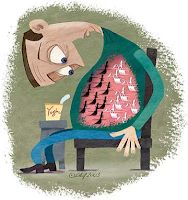
According to the EUFIC (European Food Information Council), probiotic and prebiotic has made a big impact and are now widely used due to the positive effects it has made. The technology we have today has made it possible to place probiotic lactic acid bacteria in food such as, yogurts; which deemed to improve bowel function. Probiotics seem to survive through the stomach and small intestine and replace harmful micro-organisms. They also play a role in colon cancer prevention and many other diseases prevention concerning more in the digestive area.
NEWSFLASH! Master-packed product is electronically  monitored when being fed into SureBeam's irradiation chamber to ensure proper radiation dosages. Electronic beams that pasteurize beef has recently come out 7 years ago in 2003. I’ve just read about electronic beams 10 minutes ago, and how low level dosage can kill 99.9 percent of Salmonella in poultry and E. coli in ground beef! Amazing. Apparently, it had been an epic struggle to gain approval for irradiated meat from the state health officials; but finally, they gave an okay in favor for pasteurized beef, pork, and poultry, which means - eat up! This can help erase the fear of salmonella from affecting our insides.
monitored when being fed into SureBeam's irradiation chamber to ensure proper radiation dosages. Electronic beams that pasteurize beef has recently come out 7 years ago in 2003. I’ve just read about electronic beams 10 minutes ago, and how low level dosage can kill 99.9 percent of Salmonella in poultry and E. coli in ground beef! Amazing. Apparently, it had been an epic struggle to gain approval for irradiated meat from the state health officials; but finally, they gave an okay in favor for pasteurized beef, pork, and poultry, which means - eat up! This can help erase the fear of salmonella from affecting our insides.
 monitored when being fed into SureBeam's irradiation chamber to ensure proper radiation dosages. Electronic beams that pasteurize beef has recently come out 7 years ago in 2003. I’ve just read about electronic beams 10 minutes ago, and how low level dosage can kill 99.9 percent of Salmonella in poultry and E. coli in ground beef! Amazing. Apparently, it had been an epic struggle to gain approval for irradiated meat from the state health officials; but finally, they gave an okay in favor for pasteurized beef, pork, and poultry, which means - eat up! This can help erase the fear of salmonella from affecting our insides.
monitored when being fed into SureBeam's irradiation chamber to ensure proper radiation dosages. Electronic beams that pasteurize beef has recently come out 7 years ago in 2003. I’ve just read about electronic beams 10 minutes ago, and how low level dosage can kill 99.9 percent of Salmonella in poultry and E. coli in ground beef! Amazing. Apparently, it had been an epic struggle to gain approval for irradiated meat from the state health officials; but finally, they gave an okay in favor for pasteurized beef, pork, and poultry, which means - eat up! This can help erase the fear of salmonella from affecting our insides.Believe it or not, conventional and genetic engineering is also part of the food technology. As I have said in the previous post, breeding has been around for centuries. Currently, it is used for food safety and quality. It modifies or transfer distinct genes containing defined new characteristics. High quality food can be digested with ease and it taste better!
Ultrasound has found its way through food processing, oh my. The power of ultrasounds create emulsions and is fully employed in the process of mayonnaise and ketchup manufacture.

Food technology and the works, benefits more towards the Food Processing Companies. Food processing ensures fast and convenient food that ensures the consumers' need. When they want an easy meal in just a quick minutes pop in a processed Taquito pack in the microwave - in 2 minutes or less, and there you have it. You have your lunch! Scientists and companies based technology advances, on the societies' needs. Be it through tastes or looks, or healthy eating or convenience, they have the technology to make it.
Source:
- http://www.gov.pe.ca/ftc/index.php3?number=1024819〈=E
- http://www.eufic.org/page/en/food-technology/
- http://www.nrc-cnrc.gc.ca/eng/licensing/bri/probiotic-bacteria.html
- http://www.foodengineeringmag.com/Articles/Feature_Article/009468ea032f8010VgnVCM100000f932a8c0____
0 Loves
A chicken with no feathers exist. SAY WHAAAT!
 Thursday, March 4, 2010
Thursday, March 4, 2010 2:50 PM
2:50 PM
Artificial selection is an intentional breeding for specific traits or combination of traits.
 Why so serious?
Why so serious?
 Why so serious?
Why so serious?Do you know what these artificially selected Persian cats (above) has been through? A lot of suffering from respiratory problems and eating disorder. They are often bred for extremely flat faces and this cause problems. Not only the Persian cats, other plants and animals suffer from artificial selection as well! Look to your left and see a surprise! I can't help but pity the poor thing. Animals should originally be in the wild and roam free from restrictions, and not categorized as part of the human society. Unfortunately, these listed traits that are bred for don't help the animals survive in the wild AT ALL. Yet, they are extremely pampered and loved by their owners - well, not the ones you can eat which are most of them. How sweet.
The process of artificial selection essentially removes variation in a population. The animals can be especially susceptible to diseases or changes in the environment that would not be a problem for a natural population. There are also breeders who practice inbreeding between closely related individuals that cause problems, as well. Problems range from shorter life span to hip dysplasia. Without variation, everything would ceased to exist.
It not only affects the animals
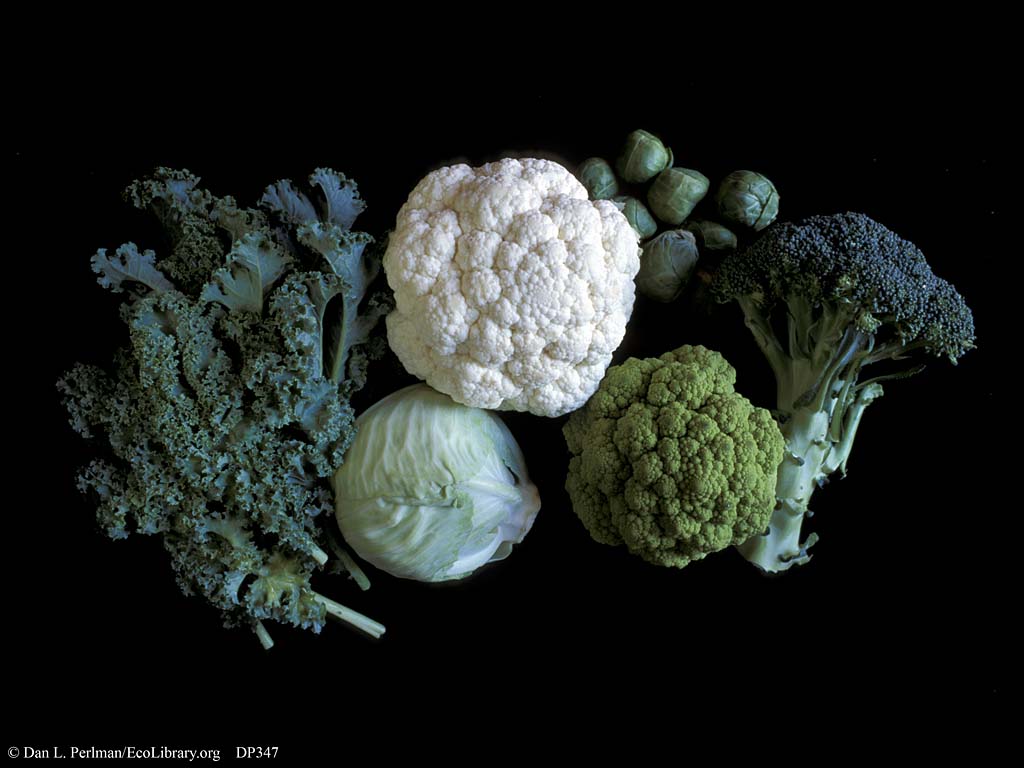 , what you eat are most likely be artificially selected. In agriculture, plants - corn, wheat, soybeans were bred carefully. Did you know that cabbage, broccoli, cauliflower, brussel sprouts, and kale are all members of the same species? Yea, I didn't know that myself.
, what you eat are most likely be artificially selected. In agriculture, plants - corn, wheat, soybeans were bred carefully. Did you know that cabbage, broccoli, cauliflower, brussel sprouts, and kale are all members of the same species? Yea, I didn't know that myself.I can see why artificial selection is deemed as bad but it can also do good. Sometimes it's not even a big of a deal however, it only benefit us, humans. A simple dog breeding is an example of artificial selection and that has been around for generations and generations.
I believe everything in this little-big world of ours are connected, such as, these lovely topics. The first post talks about biodiversity - which I've stressed how our world has changed drastically. The second pretty much tells the beginning of the end. I'm pretty sure, that a huge amount of the human population has realized how shallow and selfish we can really be, yet, rarely do we change. We try but it does more harm than good. We are (pathetically) humans, therefore, we like things that benefits us even if others suffer as a result, sadly.
Sources:
http://www.wisegeek.com/what-is-artificial-selection.htm
http://library.thinkquest.org/C0118084/Gene/Genetic_variation/artificialselection.htm
http://www.lycos.com/info/artificial-selection.html
2 Loves
I want my child to look just like her!
 Tuesday, February 16, 2010
Tuesday, February 16, 2010 6:42 PM
6:42 PMFriend: "Aw, it's been so long! Oh my, you're pregnant! When are you due?"
Wife: "Oh, I'll be due in two months! We can't wait to see our blue-eyed, fair skinned, baby."
Friend: "But I thought you guys are mexican..."
Wife: "Yeah! I KNOW! :D Isn't that great?!"
Wouldn't that be an eye-twitching conversation to listen to?
Pouty lips - check!
Big, deep, light eyes - check!
High def. cheek bones - check!
Cute little nose - check!
What else? I'd like my daughter to grow up like one of them, thanks.
Designer babies - as appealing as it may sound (with sarcasm intended)... I find it COMPLETELY UNNATURAL, shocking, and plain freaky. I mean sure, who wouldn't want their daughters to grow up as a gorgeous woman or their son completely immune to certain diseases? But to completely have all control of choosing the ideal personality, the ideal looks, the ideal child you've always want to have... seems a little weird and controlling, in my opinion. Oh, technology. What else is new? I'm sure most of the human population know that our research and technology, in general, are on their way to the top of the world - domination (just kidding). But in a more serious note, I do agree that things are getting out of hand with our research into genetic process.Big, deep, light eyes - check!
High def. cheek bones - check!
Cute little nose - check!
What else? I'd like my daughter to grow up like one of them, thanks.
What is a designer baby, really? The term was used by journalists that defines children whose genotypes, physical characteristics, and susceptibility to hereditary deceases are selected by their parents. How cool is that? Very cool! Step right up, it only costs about $20,000 or so!
So what happens if you made a mistake? Discarding the embryo is just one of the ridiculous options (frozen and never used - is also another one that, my friend, Ana had mentioned on her blog). Doesn't that sound a little familiar? Abortion... maybe? What's even more horrid is that, this baby was actually planned. There's one mistake and you have a choice of getting rid of it - like I said, it's like an abortion!
I strongly believe that God created us in his image. Be it disabled, ugly, beautiful, tall, short...
 that's just the way life is - usually. I believe it's more exciting that way - to be able to experience hardships, the feeling of success, adventures, and unexpected moments that leaves an imprint in our lives. A planned out life seems so bland, dull, and not as exciting. You expect so much when you plan and it always suck when you get what you least expect.
that's just the way life is - usually. I believe it's more exciting that way - to be able to experience hardships, the feeling of success, adventures, and unexpected moments that leaves an imprint in our lives. A planned out life seems so bland, dull, and not as exciting. You expect so much when you plan and it always suck when you get what you least expect.This is one controversial topic... I do somehow understand the benefits in this, such as, able to choose immunity over hereditary diseases. It can save lives and a lot of money in the long run if the family has a history lineage of diseases or illness. People can worry less and avoid unnecessary depression. Few less lonely kids out there, since these designer babies can be and will be"loved".
 In conclusion, there may be pros in designer babies but the cons has the louder voice in this end. Although, I doubt this new fad would be disrupted if its supporters has the money. Money buys anything. Moving on... As you can see, you won't see me wasting money in the future, for a designer baby when I can have a free beautiful child of my own, naturally made. Just find the right guy, you know. ;)
In conclusion, there may be pros in designer babies but the cons has the louder voice in this end. Although, I doubt this new fad would be disrupted if its supporters has the money. Money buys anything. Moving on... As you can see, you won't see me wasting money in the future, for a designer baby when I can have a free beautiful child of my own, naturally made. Just find the right guy, you know. ;)Sources:
www.bionetonline.org/English/content/db_cont1.htm
http://www.time.com/time/magazine/article/0,9171,989987,00.html
http://www.geneticsandsociety.org/article.php?id=127
http://www.scientificamerican.com/article.cfm?id=regulate-designer-babies
The barrier between the elite and the norms is wider than ever. What do you think of designer babies? Do you believe that this process of baby making can lead to a better planet to live in? Share your thoughts, I'd love to read them!
2 Loves
Why is Biodiversity Important? Who Cares?
 Tuesday, October 6, 2009
Tuesday, October 6, 2009 7:31 PM
7:31 PM
Exactly the point! Who cares? Do we care? Well of course we do, but does any one of us take action? Yeah! Many do take action but in spite of everything, several fail to notice the changes and effect in life. We, humans, must take responsibility on how we affect the biodiversity of our ecosystems, be it positively or negatively.
First things first, what does biodiversity mean to us? “Biodiversity boos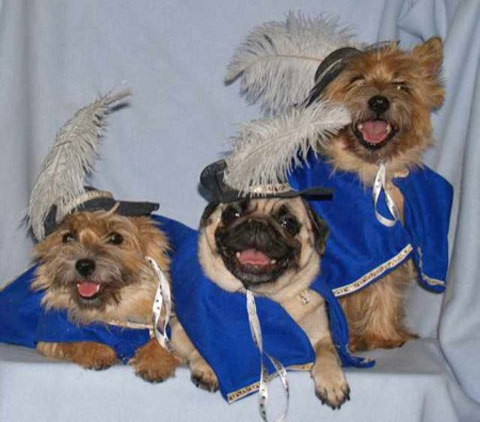 ts ecosystem productivity where each species, no matter how small, all have an important role to play,” (Global Issues article). For example, when there is a big variety of species it can guarantee natural sustainability for all beings so basically, its “all for one and one for all.” The tropical forests, wetlands, and coral reefs are several of the threatened ecosystems. From fishermen to mailman and everyone else in the world, affects the environment around us. It all happens through polluting, threatening, harvesting, over fishing, littering and many other horrendous “-ing’s”. (But of course, it’s not entirely all “-ing’s” fault.)
ts ecosystem productivity where each species, no matter how small, all have an important role to play,” (Global Issues article). For example, when there is a big variety of species it can guarantee natural sustainability for all beings so basically, its “all for one and one for all.” The tropical forests, wetlands, and coral reefs are several of the threatened ecosystems. From fishermen to mailman and everyone else in the world, affects the environment around us. It all happens through polluting, threatening, harvesting, over fishing, littering and many other horrendous “-ing’s”. (But of course, it’s not entirely all “-ing’s” fault.)
 ts ecosystem productivity where each species, no matter how small, all have an important role to play,” (Global Issues article). For example, when there is a big variety of species it can guarantee natural sustainability for all beings so basically, its “all for one and one for all.” The tropical forests, wetlands, and coral reefs are several of the threatened ecosystems. From fishermen to mailman and everyone else in the world, affects the environment around us. It all happens through polluting, threatening, harvesting, over fishing, littering and many other horrendous “-ing’s”. (But of course, it’s not entirely all “-ing’s” fault.)
ts ecosystem productivity where each species, no matter how small, all have an important role to play,” (Global Issues article). For example, when there is a big variety of species it can guarantee natural sustainability for all beings so basically, its “all for one and one for all.” The tropical forests, wetlands, and coral reefs are several of the threatened ecosystems. From fishermen to mailman and everyone else in the world, affects the environment around us. It all happens through polluting, threatening, harvesting, over fishing, littering and many other horrendous “-ing’s”. (But of course, it’s not entirely all “-ing’s” fault.)Aside from all the negativity about our human interventions having an effect on the biodiversity of our ecosystems, there is also the plus side. Yes, something less gloomy and more enthusiastic on how we see life. Even though, we rarely see any positive  affects, we still need that encouraging optimism and the wonderful productivity we’ve done to so far to keep us going. Several people may support environmental activities to help preserve the “beauty” of Nature but it’s not truly a justifiable reason as it is a biased view. For many numbers of years, various environmentalist, biologist, and scientists from all over the world think of earth entirely as one massive living life form in view of the fact that all living species mutually depend on each other. It suggests that ecological balance and biodiversity are crucial for all earth, not just humans. So we are not all as horrible as we think we are.
affects, we still need that encouraging optimism and the wonderful productivity we’ve done to so far to keep us going. Several people may support environmental activities to help preserve the “beauty” of Nature but it’s not truly a justifiable reason as it is a biased view. For many numbers of years, various environmentalist, biologist, and scientists from all over the world think of earth entirely as one massive living life form in view of the fact that all living species mutually depend on each other. It suggests that ecological balance and biodiversity are crucial for all earth, not just humans. So we are not all as horrible as we think we are.
 affects, we still need that encouraging optimism and the wonderful productivity we’ve done to so far to keep us going. Several people may support environmental activities to help preserve the “beauty” of Nature but it’s not truly a justifiable reason as it is a biased view. For many numbers of years, various environmentalist, biologist, and scientists from all over the world think of earth entirely as one massive living life form in view of the fact that all living species mutually depend on each other. It suggests that ecological balance and biodiversity are crucial for all earth, not just humans. So we are not all as horrible as we think we are.
affects, we still need that encouraging optimism and the wonderful productivity we’ve done to so far to keep us going. Several people may support environmental activities to help preserve the “beauty” of Nature but it’s not truly a justifiable reason as it is a biased view. For many numbers of years, various environmentalist, biologist, and scientists from all over the world think of earth entirely as one massive living life form in view of the fact that all living species mutually depend on each other. It suggests that ecological balance and biodiversity are crucial for all earth, not just humans. So we are not all as horrible as we think we are.International and Nationwide organizations work together to change the conditions of the world. One of the b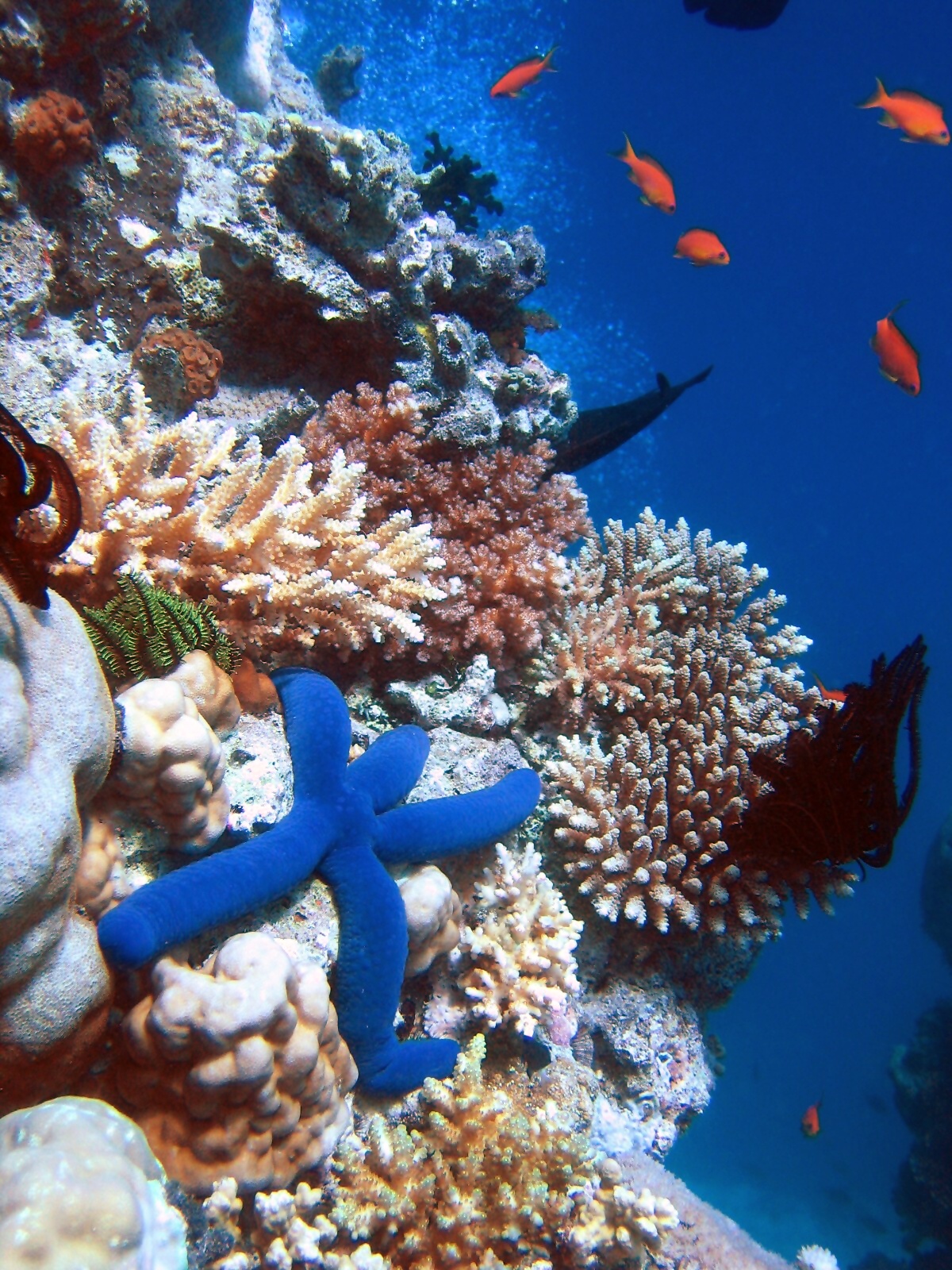 reakthroughs that positively affect our ecosystems is the organization of TEEB (The Economics of Ecosystems and Biodiversity). It is a major international initiative that attracts attention to the global economic benefits of biodiversity that highlights the growing costs of biodiversity loss and ecosystem degradation. They help enable access to leading information and tools to improved biodiversity practice for the business community and help raise awareness. Given the fact that coral reef is one of the threatened ecosystems, it is one of the things TEEB are concerned about. Scientists and the government contribute to the process of saving the coral reef through hardcore thinking and investments. This is just one of the many organizations out there that are working hard in their own way of preserving the biodiversity of our ecosystem. Even though the situation is an irreversible damage, at least they’re trying.
reakthroughs that positively affect our ecosystems is the organization of TEEB (The Economics of Ecosystems and Biodiversity). It is a major international initiative that attracts attention to the global economic benefits of biodiversity that highlights the growing costs of biodiversity loss and ecosystem degradation. They help enable access to leading information and tools to improved biodiversity practice for the business community and help raise awareness. Given the fact that coral reef is one of the threatened ecosystems, it is one of the things TEEB are concerned about. Scientists and the government contribute to the process of saving the coral reef through hardcore thinking and investments. This is just one of the many organizations out there that are working hard in their own way of preserving the biodiversity of our ecosystem. Even though the situation is an irreversible damage, at least they’re trying.
"These TEEB findings demonstrate that climate change and biodiversity loss must be tackled together. They lend further support to the EU's goal of achieving a concrete and ambitious agreement in Copenhagen that comprises both reductions in the world's greenhouse gas emissions and the creation of global mechanisms to stop tropical deforestation. Quite simply, we will not manage to halt biodiversity loss if we do not mitigate climate change. And we will not be able to mitigate and adapt to climate change if we do not protect our valuable ecosystems and biodiversity."
- Mr. Falkenberg
Sources:
1. - http://www.globalissues.org/article/170/why-is-biodiversity-important-who-cares
2. - http://www.bgci.org/resources/article/0423/
3. - http://www.unescobkk.org/education/esd/about-esd/esd-briefing/biodiversity/
4. - http://www.sciencedaily.com/releases/2009/09/090902112119.htm
5. - http://www.teebweb.org/
 And so, WE should also try! YOU and ME, Let us make a difference. Even simply doing the littlest of things such as, taking the bus instead of your car can make a difference. Do a good deed! Love earth, take care of it.
And so, WE should also try! YOU and ME, Let us make a difference. Even simply doing the littlest of things such as, taking the bus instead of your car can make a difference. Do a good deed! Love earth, take care of it.2 Loves
Information
Layout: Princess bioProjectBrowser: Mozilla Firefox
Screen: 1280X800
The Princess
Hello my name is Princess and I'm a relatively good girl. I have an absolutely sweet tooth and I like chocolates and candy floss although they make me look kiddish most of the time. I am irrationally and irrevocably in love with you but the unrequited love tears me apart.Friends
Ana
Francis
Mary Ward Bio Blog
Credits
Layout: tuesdaynightResources: 1 2



